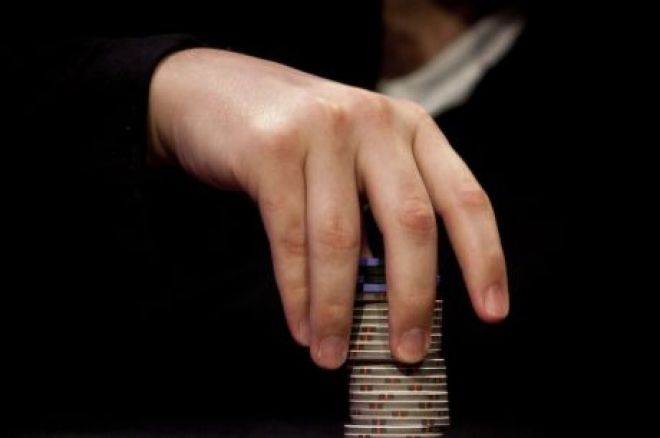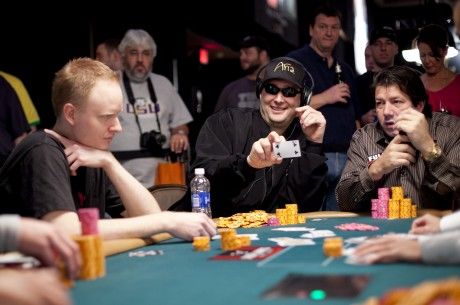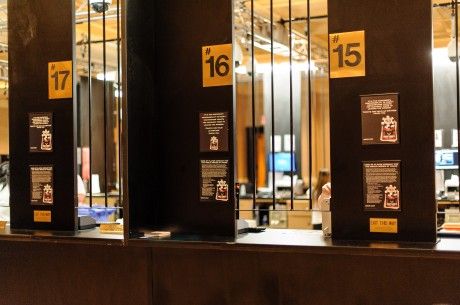Small Opening Raises in Tourneys: When They Are and Aren��t a Good Idea

It is by now well-documented that many tournament players frequently will open for a minimum raise before the flop �� that is, twice the size of the big blind. Sometimes this is a very good idea. After all, there��s a reason why so many of the best in the world play this way. Sometimes, though, a larger opening raise would be better. Choosing your raise size accurately requires understanding the mechanics and purpose of the preflop raise.
Preflop raise-sizing
When we talk about ��choosing a raise size,�� it��s important to realize that we mean one raise size for a given situation. In a tournament, it��s rarely correct to vary the size of an opening raise based on the cards you hold. (This is a point that my co-host Andrew Brokos frequently makes on our podcast.)
There are several reasons to raise before the flop, and understanding them well will point us to the best situations for min-raising. Here are two of the most important reasons for opening with a preflop raise:
- Raising instead of calling (or folding) gives us the chance to win the pot immediately, and �� especially in tournament poker �� this is usually a good thing.
- Raising allows us to put more money in the pot in favorable circumstances, such as when our range is strong, when we are in position, or when the situation is otherwise advantageous.
In no-limit poker, we are especially concerned with making the situation as favorable as possible when we get all our money in. Your bottom line depends heavily on how you do in the biggest pots you play.
Why, then, do players often make small raises in tournaments? Let��s go back and think about that first goal to win pots without resistance before the flop.
Blind-stealing
Two features of blind-stealing change in tournaments: there are often antes in the pot, and opponents are often (correctly) more risk-averse in tournaments than they are in cash games.
Both of these facts make min-raising before the flop appealing. Against risk-averse opponents even a min-raise can be enough to win the pot, and you��d like not to raise more than necessary to get the job done. The antes make min-raising appealing for a different reason. The antes make it impractical to fold out many of the hands that a 3x raise might fold out in a cash game.
Suppose you��re playing $1/$2 no-limit hold��em and make it $7 from the button. If the small blind folds, the big blind will have to call $5 into a pot of $10 ($15 after his call).
Now suppose we��re playing a tournament in which the blinds are 100/200 with a 25 ante and you want to raise enough from the button to confront the big blind with the same 5-to-win-15 odds. If you��re playing nine-handed, you would have to raise to 925 to accomplish this. Rather than risking more than four-and-a-half big blinds on an opening raise, we simply abandon the goal of folding out hands like Ax8x and Kx4x-suited, instead contenting ourselves with folding out the very worst hands (if we can) and with building the pot in position.
Building pots
Moreover, building the pot works differently in tournaments than it does in cash games, which is why players pursue that second goal to build pots in advantageous situations a little differently.
Because stacks are shorter in tourneys, it��s easier to threaten them, and we often don��t need to make large preflop raises to put stacks in play later. Think again about the 100/200/25 level and suppose everyone has 40 big blinds (which is deeper than the average stack will often be in a tournament). Even if you only min-raise, a call from the big blind will make a pot of 1,125 with remaining stacks of 7,600 (the 38 remaining big blinds). When the ratio of the stack to the pot is less than 7 going to the flop, there are many ways to threaten your opponent��s stack. (The stacks aren��t even deep enough to make 75%-pot bets on all three streets.)
Finally, not only are your opponents often risk-averse in tournaments, but you should be, too. You have more incentive to make small bets, especially when they have the other benefits I have just discussed.
When not to min-raise
We can now also understand why min-raising sometimes isn��t the right play. When (for whatever reason) you��ll have much more fold equity with a 3x raise than with a min-raise, you should often opt for the larger size. And when stacks are deep (especially in the pre-ante stages), you should at least consider reverting to your cash game bet-sizing, including before the flop.
Bet-sizing is a difficult subject and this isn��t a full treatment of preflop raise-sizing. I follow the status quo by often making small raises in the ante stages of tournaments, but I��m more likely than many other players to choose a 2.5x raise size instead of a min-raise. Max Steinberg, meanwhile, is known for choosing large raise sizes before the flop �� if you��re curious, you can study Steinberg��s play at a 2013 WSOP final table here.
Whatever your strategy, it will improve if you ground it in an understanding of the fundamentals of preflop play and of bet-sizing.
Be sure to check out Nate and Andrew Brokos on the Thinking Poker podcast, and for more from Nate visit his blog at natemeyvis.com.
Get all the latest PokerNews updates on your social media outlets. Follow us on Twitter and find us on both Facebook and Google+!








